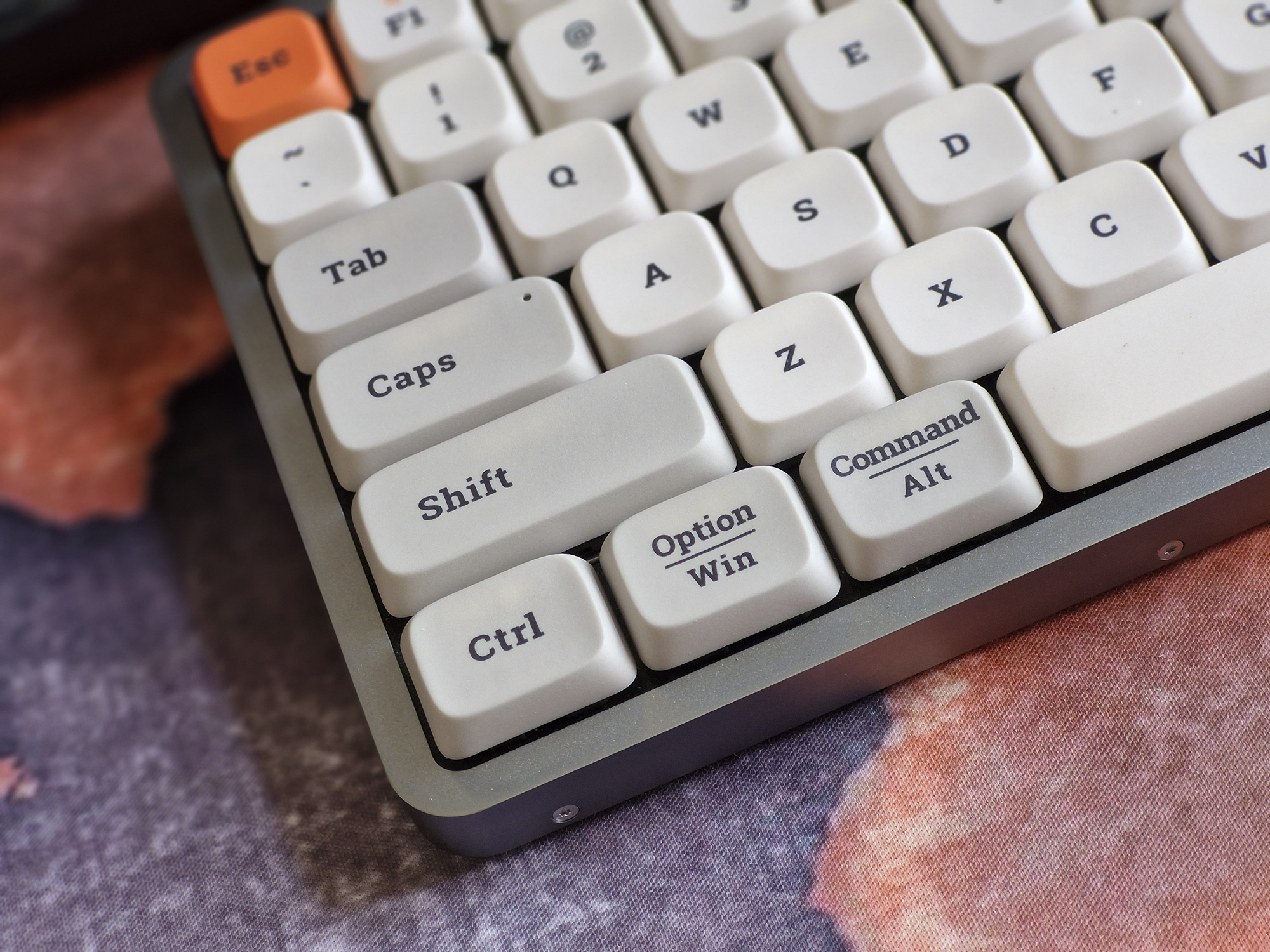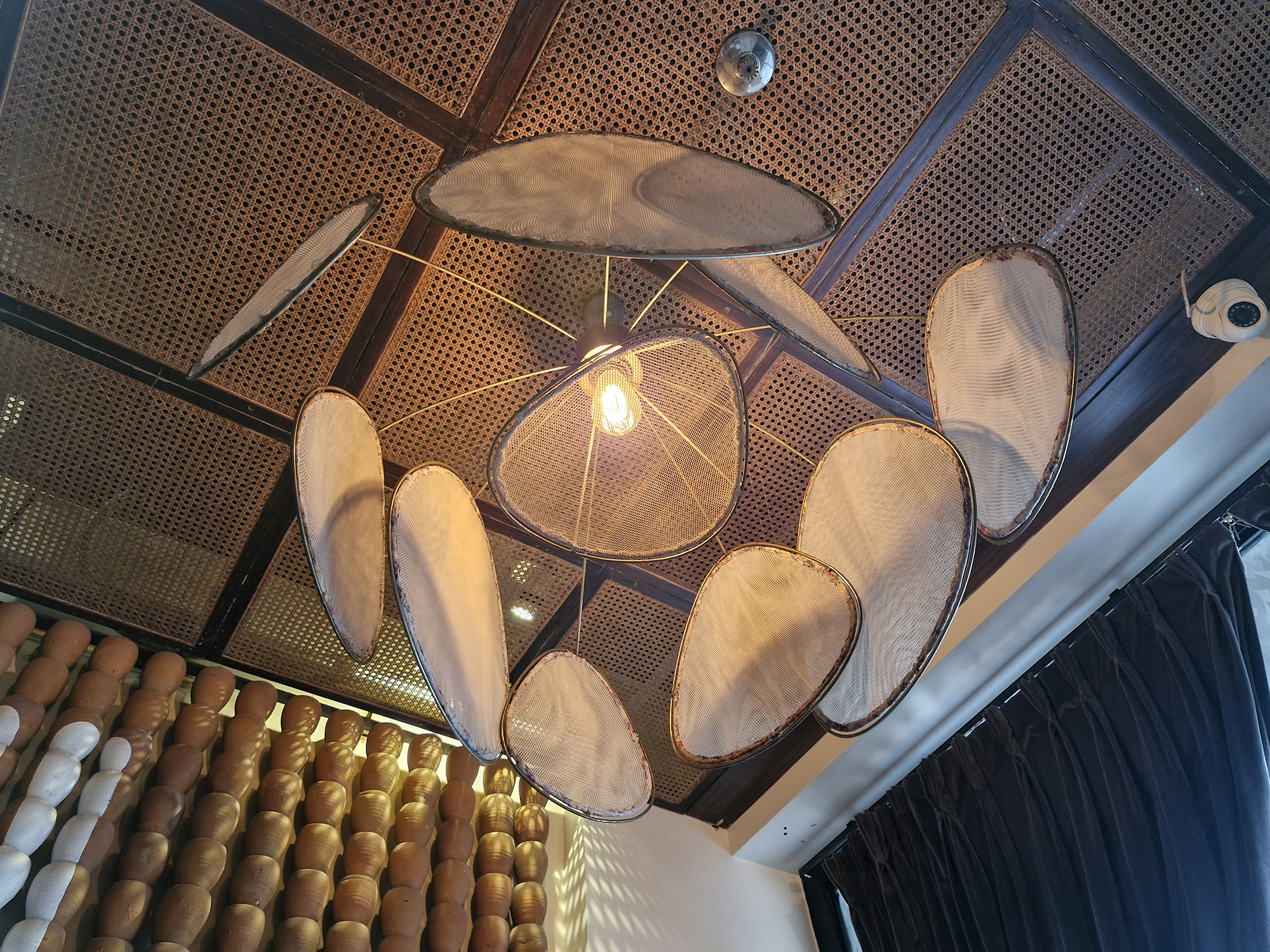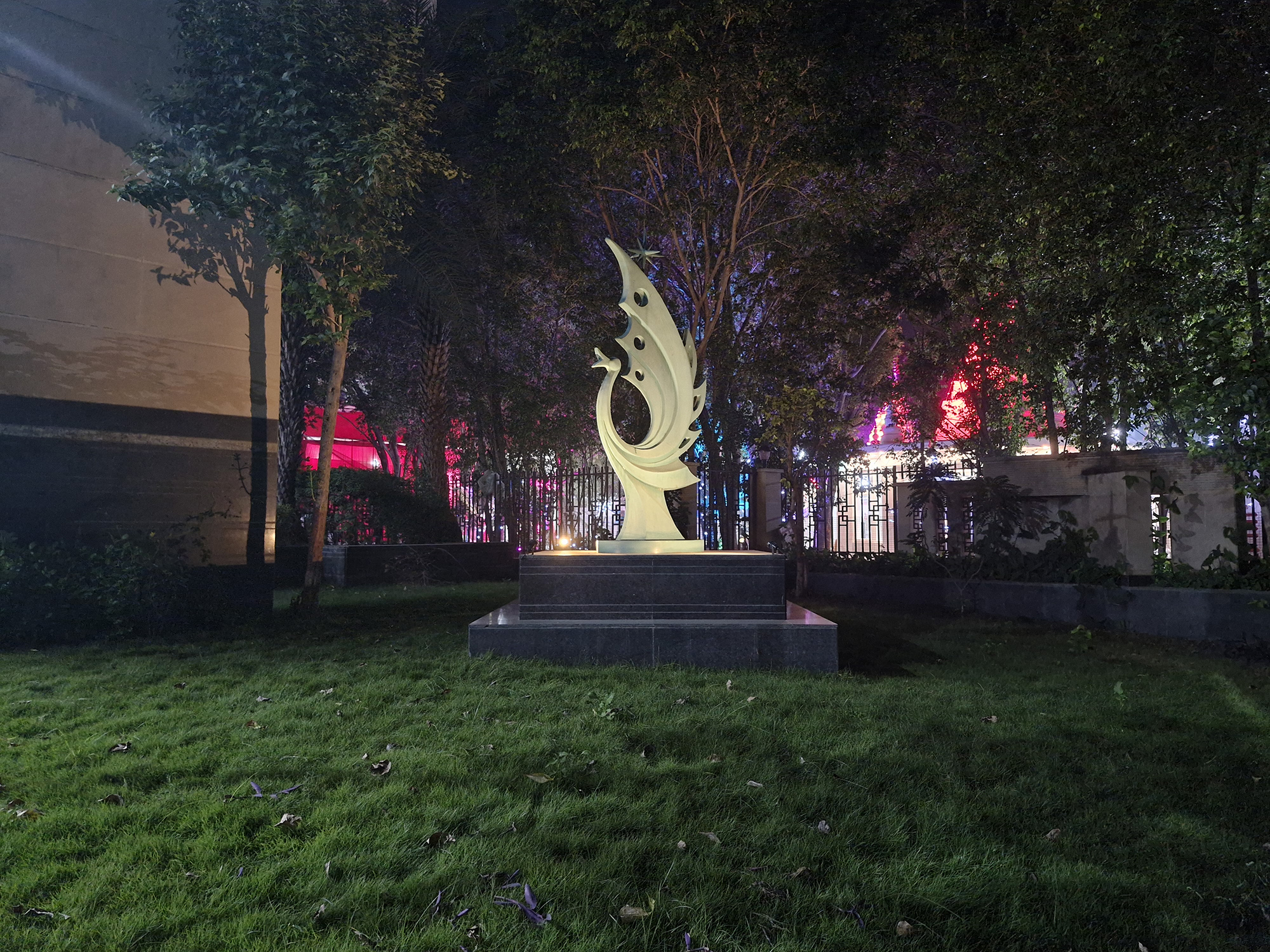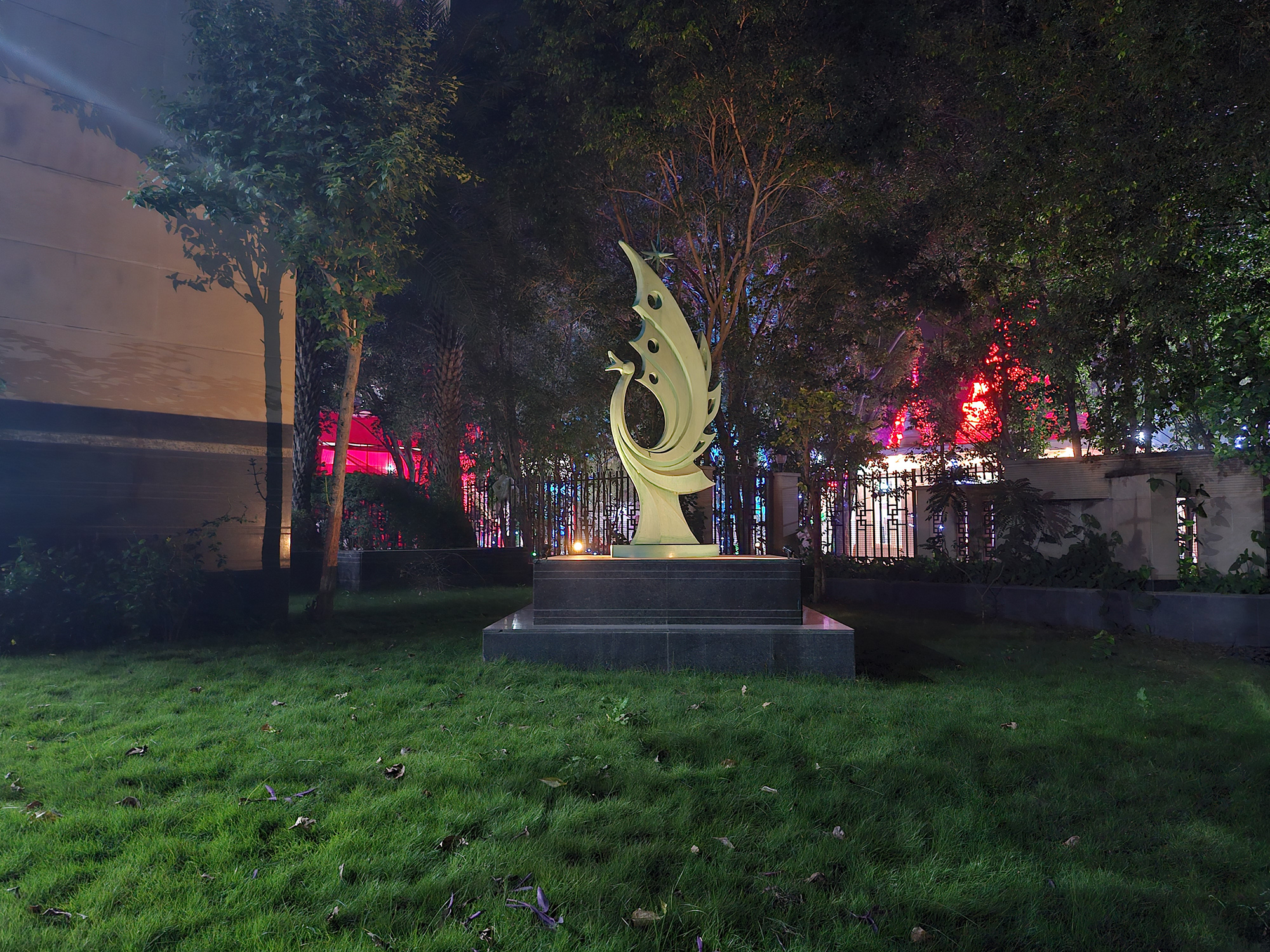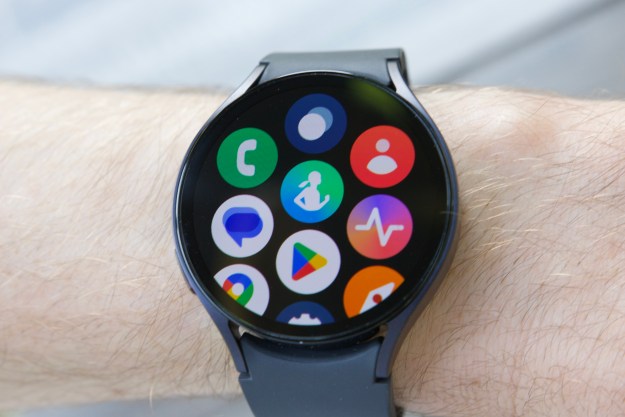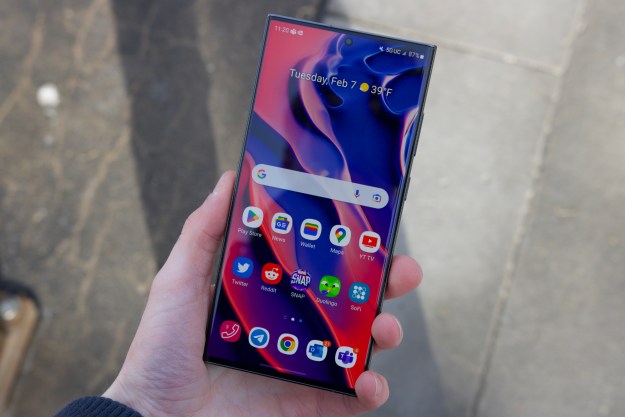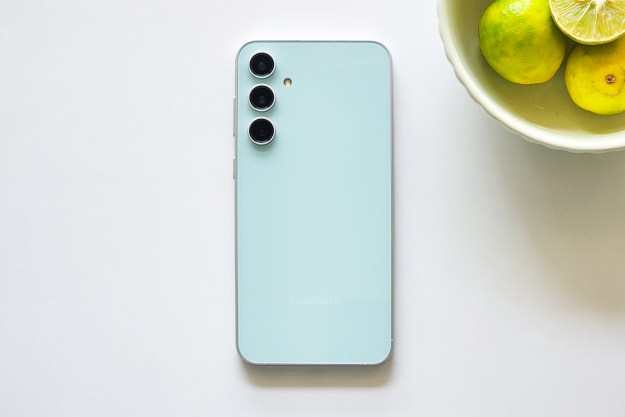
- IP68 dust and water resistance
- Bright AMOLED display
- Four promised Android upgrades
- Fast wireless charging
- Competitively priced
- Uncomfortable design
- Compromised performance
- Lacks superfast wired charging
Samsung’s Fan Edition (FE) smartphones lurk under the shadow of its flagships. With some visible compromises compared to the Galaxy S series, the Galaxy FE brings previous years’ specifications repackaged in a new design. That’s not always the best selling strategy, and the absence of a Galaxy S22 FE affirms this idea. However, two years after the Galaxy S21 FE, Samsung is returning with another FE series smartphone — the Galaxy S23 FE, which was announced earlier in October.
Despite its older specifications, the Galaxy S23 FE gets a very tempting price of just $600, which, to some extent, justifies the compromises that Samsung makes here. Besides the price, you get Samsung’s assurance of four Android updates, glass-and-metal construction, and premium features such as fast wireless charging. On the other hand, you have to settle for an unsavory chipset and issues that may hamper your experience from the beginning.
Does the attractive price justify these trade-offs? We find out in our review of the Samsung Galaxy S23 FE below!
Samsung Galaxy S23 FE: design

Samsung appears averse to the idea of using distinguishing designs for different models and uses the same identical design for every phone each year — while playing with dimensions and different materials. The Galaxy S23 FE fits this premise and comes with a design you can’t distinguish from other Samsung phones from 2023 — save for the Galaxy S23 Ultra — unless you fixate on the nuances. Basically, you can put the Galaxy S23 FE alongside the Galaxy S23 (or S23 Plus) and the Galaxy A54, and you wouldn’t be able to tell the models apart simply by looking at their backs. I’m not a fan of this design mantra, but if Samsung hasn’t had the urge to change it, it must work well for the company.
Instead of a distinct design, Samsung relies on vibrant colors for the Galaxy S23 FE to be easily distinguished from the other models. Besides the standard cream white and graphite gray, there are two additional colors — mint green and purple — that are unique to the Galaxy S23 FE. Besides these colors, buyers will also be able to choose others, including tan and slate blue shades, if they buy the phone on Samsung’s website in the U.S. These colored back panels are protected under a sheet of glass and reinforced by Gorilla Glass 5.

The midframe is made of aluminum, but unlike the regular Galaxy S23, there are no claims about using recycled metals. It gets a satiny finish, which can also be seen on the buttons and around the three cameras that emerge out of the back surface individually instead of being placed inside a singular camera island. While the frame is curved and smooth to the touch, it forms sharp edges along the back instead of blending seamlessly, which makes the phone uncomfortable to hold for a long duration. An easy fix is using a case with the phone — and doing so will also protect the back glass and the aluminum frame from dings and cracks.
But if you choose to skip the case, the experience will be even more daunting because of the Galaxy S23 FE’s weight. Unusually heavy for its size, the smartphone weighs 209 grams (approximately 7.4 ounces). Similarly sized phones, especially the Galaxy S23 Plus with nearly identical dimensions, are much lighter despite using similar glass sandwich designs with metal frames.
On the positive side, the Galaxy S23 FE comes with supreme water and dust resistance. It is certified with an IP68 rating, suggesting it will withstand being submerged under 5 meters (16 feet) of freshwater for about 30 minutes. The key here is freshwater since the phone — like any other phone with a similar rating — will not survive water from a swimming pool or the sea.
All in all, the design can be hit-and-miss based on personal preferences. While Samsung’s choice of materials safeguards durability, the phone does not feel very pleasant to hold, especially without a case. If you look at it from the stance of practicality, the Galaxy S23 FE has a winning design, but if you have been spoiled by lighter, more ergonomic phones from brands like Motorola or OnePlus, you may not find this one very appealing.
Samsung Galaxy S23 FE: display

The Galaxy S23 FE comes with a 6.4-inch Dynamic 2X AMOLED display. Dynamic 2X is a marketing term used by Samsung to describe displays with up to a 120Hz refresh rate and support for 100% of the DCI-P3 color gamut. In simpler terms, these displays are highly vibrant and have the punchiest colors among smartphone displays. This class of display is also seen on Samsung’s flagship devices, including the Galaxy S23 series and the Galaxy Z Fold 5.
A minor difference between the display on the Galaxy S23 series and the Galaxy S23 FE is that the latter lacks an LTPO switch, which means the display’s refresh rate does not actively adapt to the content being played on the screen. The display rolls back to 60Hz when you’re not interacting with it to save battery (since a smoother 120Hz refresh rate display consumes more power). The Galaxy S23 FE’s display’s brightness is limited to 1,450 nits, which isn’t dim, but is less bright than the more premium Galaxy S23 series. However, unless you are looking at the Galaxy S23 FE and one of the Galaxy S23 phones simultaneously, you wouldn’t notice a major difference. The Galaxy S23 FE gets ample visibility even in bright outdoor environments, making it easy to use even in harsh lighting.

What you will instantly notice, however, are the large bezels surrounding the FE’s display, especially at the bottom. For context, the Galaxy S23 Plus has similar dimensions, but houses a larger 6.6-inch display, while the Galaxy S23, with a similarly sized 6.4-inch display, takes up less space in the palm. These bezels reduce the Galaxy S23 FE’s chances of being as appealing as its more premium siblings or other phones in the flagship segment. However, the almost $200 savings you get as compared to the Galaxy S23 makes up for the aggravation caused by this display.
Despite cutbacks, the $600 pricing makes Galaxy S23 FE an excellent value for money.
It also features an in-display fingerprint scanner, which is faster than most A-series models, but might be slower than Samsung’s flagship series. This is because the FE uses an optical fingerprint scanner, i.e., it uses light to scan and detect the ridges on your fingers. On the other hand, the Galaxy S23 (and all Samsung Galaxy S series phones starting with the S10) uses an ultrasonic fingerprint sensor, which employs a silent sound pulse to scan your fingerprint, making it generally more accurate (it can even be used with dirty fingers). All smartphones other than Samsung still use optical fingerprint scanners, so you don’t feel at a disadvantage here.
If you aren’t concerned about the intricacies, the display performs well in absolutely any lighting scenario. Lastly, it lacks Dolby Vision as part of Samsung’s enterprise to promote its proprietary HDR10+ codec. Compared to phones like the OnePlus 11, the lack of Dolby Vision can feel disappointing, especially if you spend sufficient time binging Netflix, Max, or Apple TV+.
Samsung Galaxy S23 FE: cameras

The Galaxy S23 FE gets a triple camera setup on the back, including 50MP primary, a 12MP ultrawide, and an 8MP telephoto cameras. On paper, these cameras have some similarities with the Galaxy S23 series, which is assuring for those who like to utilize their phones’ cameras to their full potential. For starters, the primary 50MP camera has the exact specifications found on the Galaxy S23 and the Galaxy S23 Plus. Incidentally, a camera sensor with similar specs is also found on the Galaxy S22 series (except the S22 Ultra) and more affordable Samsung phones such as the Galaxy A54. Since Samsung does not reveal the exact model name of the sensor, it isn’t easy to pinpoint the differences.
Secondly, we see the Galaxy S23 FE repeating the same ultrawide angle camera sensor from the Galaxy S23 — although without an autofocusing lens. Lastly, the telephoto camera, which is capable of 3x optical zoom, shares specifications similar to the Galaxy S23 and the S23 Plus, but with a lower resolution of 8MP instead of 10MP.
The primary camera is capable of taking crisp and detailed shots, especially in bright lighting. Instead of taking 50MP images, it takes 12.5MP shots by combining four pixels into one for improved brightness. Most of the images taken in daylight have sharp focus and close-to-natural colors. In low lighting, the camera tends to compensate for the lack of sharpness by boosting image saturation and HDR. Contributing to the sharpness of the images is optical image stabilization (or OIS). Here’s how the images turn out:
With moving objects like the potter’s wheel in the image below, the camera captures a trail due to a not-so-quick shutter. You can rectify this to some extent by using the Motion Photo feature (similar to the iPhone’s Live Photo), but it selects the best shot for you automatically instead of letting you choose the one you prefer. For better control over the images, you can use the manual mode (called Pro Mode on Samsung).
There is an expected decline in quality at nighttime, but the Night Mode can patch some of the poorly lit regions of a photograph by taking shots at multiple exposure levels and patching them together. Using the Night Mode also boosts the saturation in the image — sometimes beyond what is palatable.
The ultrawide angle camera lacks the same crispness as the primary camera, mainly because there’s no autofocus. Besides lower clarity, the images are relatively darker, resulting in shadows filled with visual noise, which the phone again tries to patch using HDR, making images even more noisy. These ultrawide shots are best captured with ample lighting. The lack of autofocus also removes the possibility of using this camera for macro shots.
The 3x telephoto does a much better job of taking sharper images despite the distance. Its primary objective is to capture portraits with a natural background blur instead of capturing distant landscapes, but it does both well. The only scenario in which you might see the portrait camera struggling is when the light source is behind the person or the subject. By compensating with artificially boosted exposure and HDR, the phone not only introduces more noise in the shot, but also messes up the edge detection for bokeh.
When it comes to selfies, the Galaxy S23 FE settles for a 10MP fixed-focus camera on the front, unlike the autofocusing unit on more premium Galaxy S series phones. In daylight or favorable lighting, the selfies turn out sharp and saturated, but the phone may struggle to ensure the same in harsher lighting, such as when the source of light is behind you.
For videos, the Galaxy S23 FE can capture 4K videos at 60 frames per second (fps) or 8K videos at 24 fps using the primary camera, and these are electronically stabilized. If you must use OIS, the video resolution dips to 1080p at 60 fps or 30 fps. The other two cameras can only record videos at a maximum resolution of 1080p at 30 fps. Meanwhile, the front camera can capture 4K60p videos, but there is no stabilization option. Using the Pro Video mode, you can also unlock 120 fps recording at 1080p resolution.
One of the reasons the camera hardware may not perform to its full potential is because of the image signal processor on the two-year-old chipset, which also bottlenecks the phone’s performance in other scenarios, as we discuss below.
Samsung Galaxy S23 FE: performance

Samsung uses its two-pronged approach for choosing processors for the Galaxy S23 FE. While the international models are powered by Samsung’s own Exynos 2200 chipset, the U.S. variants specifically get Qualcomm’s Snapdragon 8 Gen 1. This approach slightly varies from the Galaxy S22, which was equipped with the Snapdragon 8 Gen 1 in most global markets, while only the European units ran on the Exynos 2200.
Both the Snapdragon 8 Gen 1 and the Exynos 2200 are structurally similar and have comparable performance. It is also worth noting that both chipsets were announced between late 2021 and early 2022, so they are practically two generations old. Considering Qualcomm just announced the Snapdragon 8 Gen 3, these chips will be at a competitive disadvantage against other leading devices launched in 2023.
Another grievous aspect of these chipsets is their prevalent thermal inefficiencies. As noted in our Tensor G3 explainer, the Snapdragon 8 Gen 1 suffered from poor yield per silicon wafer used, which resulted in poor performance and troubling heating issues. Most of these were eliminated in the Snapdragon 8+ Gen 1, which launched in May 2021. So, Samsung’s choice to stick with either of these chipsets is disconcerting. With the slightest increase in performance load, you can feel the Galaxy S23 FE warming up.
Everyday performance will not be an issue, but you will harbor a sense of uneasiness every time you try to push the limits. Because of its propensity to heat up quickly, you will hesitate to push it for gaming despite all the power the chipset packs in. To put things into perspective, here are the results from a synthetic benchmark.
Benchmarks
The following results are from the Burnout Benchmark, which determines the computing performance of mobile chipsets by subjecting them to sustained loads. We also compare the Galaxy S23 FE with the OnePlus 10T, powered by the Snapdragon 8+ Gen 1, and the OnePlus Nord 3 running Demensity 9000, MediaTek’s flagship chipset from late 2021.
The following chart denotes the performance of the three chipsets, represented by the variation of frame rate with time, with higher values indicating better performance.

In the CPU test, the Snapdragon 8 Gen 1 starts out with the same performance as the Snapdragon 8+ Gen 1, but plateaus much more quickly, while the OnePlus 10T with a Snapdragon 8+ Gen 1 reaches a much higher peak value. The Nord 3 starts lowest, but maintains its performance for the first five minutes. Even with sustained load, the Galaxy S23 FE’s performance is inferior to the other two devices in the comparison. The instant drop in performance around the 180th second indicates crucial throttling algorithms at play.
Similarly, the following chart compares the performance of the GPUs on the three devices.

Both the Snapdragon 8 Gen 1 and the 8+ Gen 1 chipsets use the same Adreno 730 GPU design, but the Snapdragon 8+ Gen 1’s GPU achieved a 30% higher power efficiency, along with 10% better performance. As a result, we see both the Galaxy S23 FE and the OnePlus 10T have comparable initial performance. But when it comes to a prolonged load, the OnePlus 10T absolutely sweeps away the Galaxy S23 FE. Dimensity 9000 does not put up an impressive show here, but the performance remains marginally better than the Snapdragon 8 Gen 1.
Unless you plan to stick to basic 2D games, the Galaxy S23 FE is not the most appropriate phone for you.
Most importantly, the OnePlus 10T remains cooler despite the continuous brilliance. All the tests are performed at an ambient temperature of 25 degrees Celsius (77 degrees Fahrenheit). The Galaxy S23 FE starts with a CPU temperature of 31 degrees Celsius (88 degrees Fahrenheit) and ends at 62 degrees Celsius (144 degrees Fahrenheit). The OnePlus 10T, on the other hand, goes from 30 degrees Celsius (86 degrees Fahrenheit) to 56 degrees Celsius (133 degrees Fahrenheit) during the benchmark.
Gaming
While synthetic benchmarks like the one above give us a reference for performance, real-life tests are more suggestive. For real-life evaluation, we ran Genshin Impact and Real Racing 3 on the Galaxy S23 FE. Real Racing 3 offers realistic graphics that tense up the hardware quickly. The Galaxy S23 FE instantly warms up when subjected to the load, but endures the load for a few minutes before the heating starts affecting performance and causing lag or jitters in gameplay.
With Genshin Impact, the performance lag is visible instantly. First, the game suggests you lower graphics quality for optimal performance. If you set the graphics to High or Best settings, jitters are instantly observable, especially during motion and combat. Within a few minutes, the phone starts to heat up significantly, and the heat is evenly dissipated through the aluminum frame and the glass back, making the whole experience much less enjoyable.
Therefore, unless you plan to stick to basic 2D games, the Galaxy S23 FE is not the most appropriate phone for you.
Samsung Galaxy S23 FE: battery and charging

The Galaxy S23 FE utilizes a 4,500mAh battery to drive its daily functions — same as the Galaxy S23 Plus. The battery pack offers sufficient backup for an entire day of usage, including moderately power-hungry tasks such as browsing the web, watching YouTube, playing some lightweight games, and taking some pictures — all while relying on a 5G connection. The display automatically rolls back to 60Hz when you’re not actively interacting with it, which helps the phone save power.
For charging, the Galaxy S23 FE gets support for 25-watt fast charging through USB-Power Delivery (USB-PD) version 2.0. This means you can use a standard USB-C charger — including the one you use for your Apple products — to replenish the battery. Ideally, charging takes between 70 minutes and 90 minutes to go from 5% to 100%, which is on par with other Samsung flagships. You also get 15W fast wireless charging, which charges the phone fully in about three hours and is acceptable if you charge your phone at night or at a desk or in a fixed position for most of the day.
Notably, you will have to use Samsung’s own wireless chargers. If you use a standard Qi-compliant wireless charger, the charging speed will drop to 5W. Wireless charging also generates more heat than wired charging, resulting in slower charging and variations based on ambient temperature.
Lastly, you can pump power into your accessories, such as wireless earbuds, through the Wireless Power Share feature on the Galaxy S23 FE, which allows the phone’s back to act as a wireless charger. You may also be able to charge your Galaxy smartwatch like this unless restricted by an unfavorable strap design.
Samsung Galaxy S23 FE: software

While the Galaxy S23 FE’s hardware may not be as exciting as its Chinese competitors, the software is where Samsung takes a significant lead. The phone comes with One UI 5.1 based on Android 13 out of the box and is slated to get four generations of Android updates and five years of security updates. This makes the Galaxy S23 FE a proverbial turtle compared to its rabbit-like rivals.
For those switching from the iPhone, Samsung offers a familiar user interface with big and round icons and a horizontally scrolling app drawer. One UI also brings a suite of useful features over Android, including better dynamic widgets, spam call filtering powered by Bixby, digital wellness features that are significantly improved over Google’s sparsely updated Digital Wellbeing app, and different profiles for work, sleep, exercise, or outings.
You get the Samsung Wallet app to store credit and debit cards, transit cards, vouchers, tickets, boarding passes, COVID certificates, etc. Samsung also adds DeX support to the Galaxy S23 FE, which essentially allows you to use the apps installed on the phone in a Linux-like desktop mode by connecting to a larger display through a wired or wireless connection.
While One UI is one of the most refined Android-based interfaces, Samsung loads the phone with plenty of preinstalled apps, some of which you might not need. Besides its own app, Samsung also preloads apps from Netflix, Meta, and Microsoft. Most of these can be uninstalled, but it feels like an unnecessary chore and makes an undesirable first impression. Other than this caveat, the software is primarily a strong reason for buying the Galaxy S23 FE.
Samsung Galaxy S23 FE: price and availability

The Samsung Galaxy S23 FE is available for purchase in the U.S. now. Despite the initial price announcement of $600, the official Samsung store lists the unlocked variants of the Galaxy S23 FE at and $690 for the 256GB variant.
Interestingly, Best Buy lists the Galaxy S23 FE at a , as does Amazon. Unless you really want one of the exclusive colors offered on Samsung’s website, we’d advise buying the phone from Best Buy or Amazon and saving $30. It’s a very bizarre pricing strucutre, but for whatever reason, it’s the one Samsung has chosen for the S23 FE.
Samsung Galaxy 23 FE: verdict
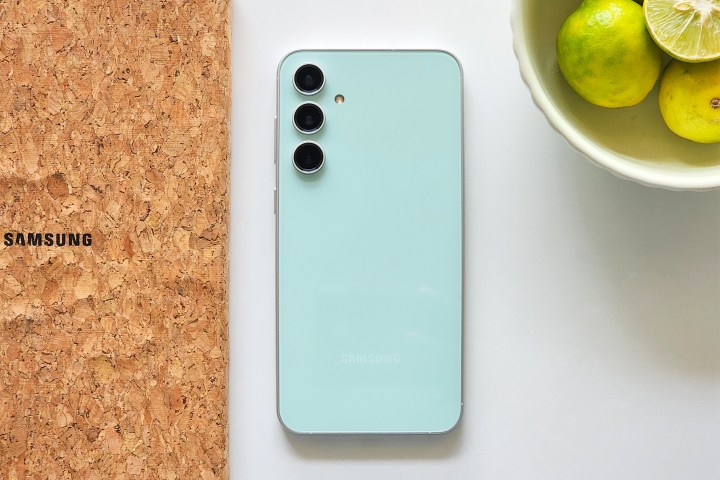
The Samsung Galaxy S23 FE brings the most practical features from last year’s Samsung flagships at a relatively affordable price. Besides performance closer to a flagship phone, you get five years of continuous software support, including four Android updates. Along with Samsung’s commitment to software, features like wireless charging, as well as dust and water resistance, make the Galaxy S23 FE a very appealing choice at this price.
The cameras on the Galaxy S23 FE share the same underlying framework as the more premium Galaxy S23 and Galaxy S23 Plus devices. With Pro photo and video modes, you can take full advantage of the sensors, although the processor’s issues with heating may dampen the overall experience, especially as the phone ages.
This brings me to my first concern about the Galaxy S23 FE — the underlying hardware that is infamous for heating issues and poor efficiency. It will prevent you from enjoying demanding tasks such as gaming or 4K video recording for long durations and may often mean that some features become inaccessible when the phone heats up. Besides gaming- or camera-related utilities, the heating can also be an issue while using features like navigation and Android Auto, especially on longer trips.
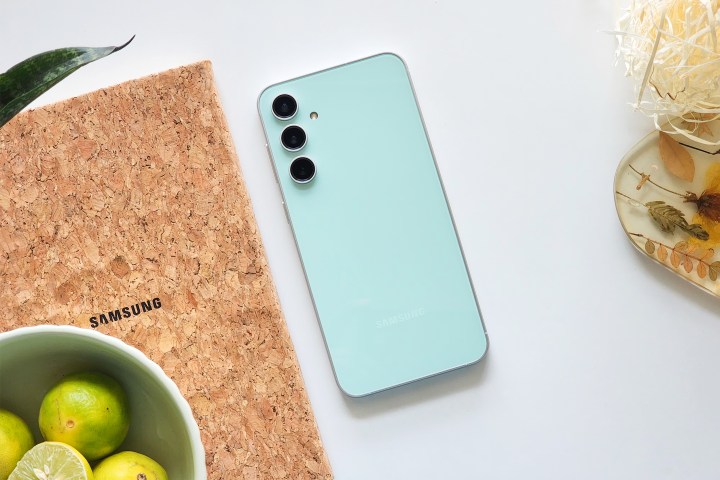
My second and most pressing gripe with the phone is its name. While its name projects it to be a part of the flagship Galaxy S23 series, the FE lacks features that set flagship Samsungs apart. The use of older Gorilla Glass protection over the display, a less bright display with bigger bezels, an optical fingerprint scanner instead of an ultrasonic one, and, most importantly, a last-generation chipset means the Galaxy S23 FE lacks the same premium allure as the actual S23 series. I strongly believe it would be much more attractive as a top-tier Galaxy A Series phone instead of attempting to don a flagship’s persona.
The price makes the Galaxy S23 FE an excellent value for money.
If you value performance, good looks, and faster charging, the Nothing Phone 2 will be a better choice, but it offers one less year of software updates. If you can stretch your budget by another $100 or so, you will have many more options, including the Google Pixel 8, the base iPhone 14, and the OnePlus 11.
Despite some of those unsightly cutbacks, the $600 price (depending on where you buy it) makes the Galaxy S23 FE an excellent value for money. If you care about a good phone that takes appreciable pictures and will be by your side for the next couple of years, the Galaxy S23 FE is the phone to get.
Editors' Recommendations
- Samsung has a new (and cheaper) way to buy the Galaxy S23
- Have a Samsung Galaxy S23? Don’t update your phone to One UI 6.1
- Galaxy AI is now available for these other Samsung phones
- What is Bixby? How to use Samsung’s AI assistant
- When is my phone getting Android 14? Here’s everything we know



